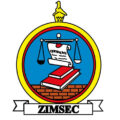There are a number of criteria that can be used to distinguish between true and false mediums. Some of these criteria include:
* **Accuracy:** A true medium should be able to provide accurate information about the deceased, such as their name, age, and cause of death. They should also be able to provide accurate information about the deceased’s relationship to the client.
* **Clarity:** A true medium should be able to communicate clearly with the deceased. They should be able to answer the client’s questions in a direct and concise manner.
* **Empathy:** A true medium should be able to empathize with the client. They should be able to understand the client’s grief and loss, and they should be able to offer comfort and support.
* **Honesty:** A true medium should be honest with the client. They should not make promises that they cannot keep, and they should not try to take advantage of the client’s grief.
It is important to note that there is no foolproof way to distinguish between true and false mediums. However, by using the criteria listed above, you can increase your chances of finding a true medium who can provide you with accurate and helpful information about the deceased.
Here are some additional tips for finding a true medium:
* **Ask for recommendations from friends, family, or colleagues.** If you know someone who has seen a medium, ask them for their recommendation.
* **Do your research.** There are a number of websites and directories that list mediums. Read reviews and testimonials before you make an appointment.
* **Trust your gut.** When you meet with a medium, pay attention to your intuition. If you feel comfortable with the medium and you believe that they are genuine, then you are probably on the right track.
It is important to remember that mediumship is a personal experience. What works for one person may not work for another. If you do not feel comfortable with a particular medium, do not be afraid to try someone else.





Latest Comments